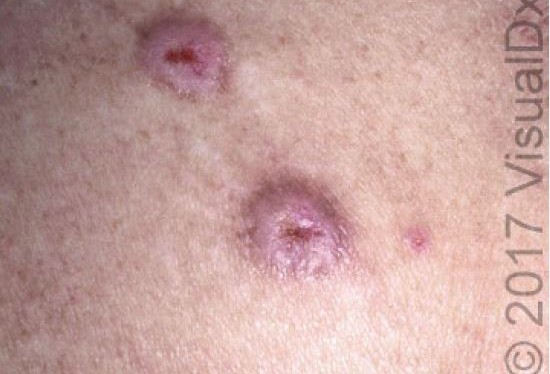Published on
- Prurigo nodularis
- Scabies
- Lichen planus
- Molluscum contagiosum
Diagnosis
The size and nature of the nodules—firm, dome-shaped, and smooth-topped—indicate a case point to prurigo nodularis. This is seen most commonly in patients ≥45 years of age, and more often in women than in men. Lesions can also be crusty, and can range in size from 1 to 2 cm, often enlarging slowly over time. They appear most often on the extensor surfaces of extremities and anterior areas of the thighs and legs (rarely on the face).
Learnings
- Prurigo nodularis may be secondary to skin conditions associated with pruritus (eg, atopic dermatitis, xerosis), as well as systemic conditions associated with generalized pruritus without a primary skin rash (eg, psychiatric conditions, HIV, iron-deficiency anemia, gluten enteropathy, renal or hepatic impairment, malignancies)
- In most cases of prurigo nodularis, the etiology of pruritus is unknown.
- Studies suggest prurigo nodularis may be a form of subclinical small fiber neuropathy, and that Th2 cytokines play an important role in pathogenesis
- Lesions are triggered by repetitive rubbing or scratching discrete areas of the skin or by repetitive picking or rubbing of nonpruritic skin
A 48-Year-Old Female with Pruritic Lesions
1 2

